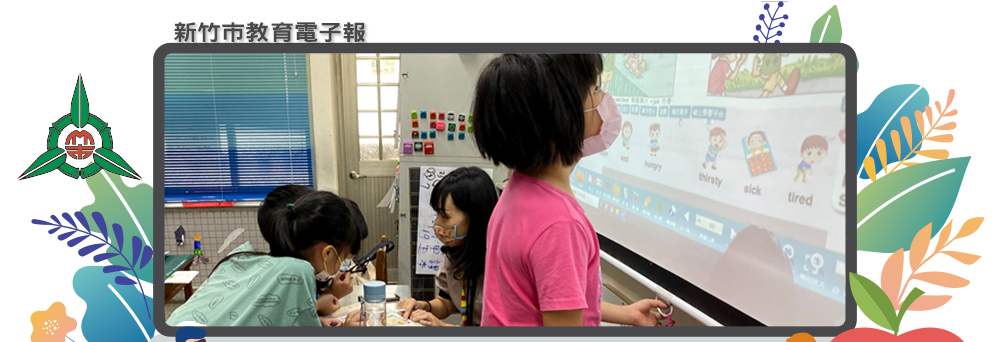

 |
 |
 |
 |
 |
 |
 |
 |
|||||||||
|
“It is more important than ever that educators collaborate to continually improve and support the success of each learner. “ -Dr. Gene Carter
As a teacher, my desire is to help every student and inspire a love of learning. But the larger the number of students in a classroom, the more difficult it is to give each student the help and attention they need. The Ministry of Education (MOE) in Taiwan is seeking to address this problem by implementing research-based co-teaching models in English classrooms across Taiwan, and training teachers to use these models. Co-teaching has been shown by years of research to be especially effective for language learning. A well-known meta-analysis of over 82 quantitative co-teaching studies conducted by Murawski and Swanson (2001) showed that co-teaching is particularly helpful for reading and language arts achievement. The clear superiority of this method of instruction for language teaching is why co-teaching has been widely implemented in English Language Learning (ELL) classrooms worldwide. Wikipedia defines co-teaching as, “...the division of labor between educators to plan, organize, instruct and make assessments on the same group of students, generally in a common classroom, and often with a strong focus on those teaching as a team complementing one another's particular skills or other strengths.” In the case of co-teaching between a Foreign Teacher (FT) and a Taiwanese or “Chinese Teacher” (CT) these differing strengths can be especially complementary and helpful for the class. The FT brings the strength of modeling native English. This can be especially helpful for teaching listening and speaking. The CT brings the strength of understanding the unique challenges and process of learning English from Chinese. This can be especially helpful with learning points of grammar and a focus on reading and writing. The CT can also assess student understanding and even translate confusing points for beginner learners. Most co-taught classrooms in Taiwan have traditionally followed the “One Teach, One Support” model of co-teaching with the Foreign Teacher (FT) leading co-taught classes and the Taiwanese or “Chinese Teacher” (CT) supporting. However, since research supports using a balance of the models of co-teaching to best enhance student learning, the MOE has initiated teacher training to help teachers start using a variety of co-teaching models within their classroom. This is the model most prominently used in co-teaching classrooms across Taiwan. The FT leads the class while the CT checks student work, keeps the score on games, checks student comprehension through questions, and translates for the FT when necessary. Both FT and CT stand at the front of the class and teach together taking turns. This model of co-teaching requires communication and coordination in planning the class. Students rotate between activities led by each teacher and independent activities. The group sizes participating in each activity are small. Each student gets an opportunity for individual participation and teacher feedback. Station Teaching is extremely fun and effective for student learning, but takes a significant amount of planning and preparation time. Each teacher takes half the class and teaches the same activity. This model has the advantage of smaller class size, enhanced participation, and increased individual feedback. One teacher leads the majority of the class while the other teacher takes a small group aside to participate in a focused learning activity. This can be used to help students who are struggling, challenge advanced students, or the group can be rotated to help the entire class.
One of the most common reported findings across the majority of studies is that effective co-teaching improves academic and testing performance. This is especially noticeable in language arts and language learning. When co-teaching with a native speaking teacher is used in language learning settings, multiple studies report improvements in the listening and speaking abilities of students as well as in the standard pronunciation of English. The variety of learning methods used in a balanced co-teaching classroom has also been shown to improve student self-confidence in English. Learning is supported for a variety of learning styles and more students benefit from the enhanced learning support. The variety of activities and enhanced individual attention has also been shown to lead to greater student motivation and increased participation.
Since we have begun incorporating a balance of co-teaching models in our classroom, we have noticed some positive changes. Both teachers have been using mostly English with the students with minimal translation. Therefore, students are interacting with both teachers more in English. We strongly encourage team members to assist each other if a student is struggling. We have seen an increase in teamwork and in willingness to answer questions in English with the support of the team. Teams encourage struggling students to raise their hands and help them answer questions so that the teams can get more points. Even other teams are helping struggling students. Various models have allowed us to use more scaffolding for effective student learning such as using writing to support speaking. The activities are fun and competitive, and we have noticed students who normally are not motivated to participate in class are more engaged, interested, and willing to help.
|



